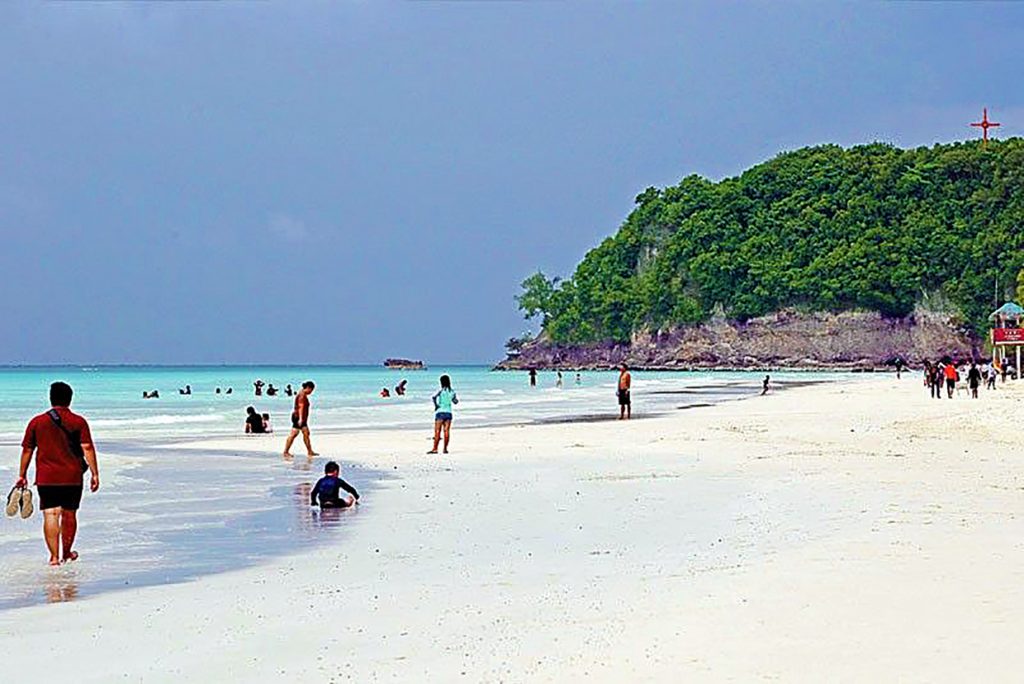Many years ago, Boracay Island was home to just a few inhabitants, lush green forests, coconut plantations, carabao trail, and of course, its powdery white sand beaches.
Boracay Island is the Philippines’ premier destination. With its pristine white sand beaches, complete modern amenities, hotels, bars, magnificent sunset and laid back stress-free tropical feel, it’s no wonder tourists find this place a captivating and relaxing place to visit.
Yet so many years ago, Boracay Island was home to just a few inhabitants, lush green forests, coconut plantations, carabao trail, and of course, its powdery white sand beaches.
I should know that quite well as I have been going back and forth to this fascinating island with my parents and siblings since the 1970s. In fact, my first project as a registered and licensed architect was the beach house of my grandparents on this island.
Traveling from Kalibo to Boracay was so simple back then. After visiting our great grandmother and relatives, we would go to Boracay Island for vacation. It was almost a yearly activity. From Caticlan, we would travel by pump boat to the island. The island always seemed rocky and ordinary from a distance, but when the boat turned toward the western side of the island and the long beach come into view, everyone in the boat would gasp in awe.
The sugary white sand is now occupied by bars, restaurants and hotels alongside coconut trees whose leaves are blown gently by the sea breeze. You can swim so far out into the horizon as the beach gently slopes outward, or take a leisurely stroll along the four-kilometer stretch of pure white sand beach with beachgoers fascinated by its beauty and nature.
On the northern tip of the island, there is the quieter Puka beach in Yapak, which was made famous by Puka shells worn by the late actress Elizabeth Taylor in the ‘80s. We used to stop here and visit relatives and friends in their beach houses, frolic on the white sanded beaches while we were young.
Around the bend towards the northeast side of the island are the Bat caves in Ilig-iligan, where we would scamper and hide among the coral stone formations. Further down northeast was the Carpio Museum with its shell collections and other native artifacts. We would go to this place and have countless lunch dates of lobsters, isdang bato, kinilaw and tinolang native chicken with family and friends after visiting the construction site of my grandparents’ beach house just nearby, or swim in the pristine white beaches.
Sadly, the museum is now gone.
Then there is the noticeable arched rock formation stretching out to the sea further down northeast on one of the promontories. We would stand under this natural formation for photos. Today, the cellphone takes care of this activity. One thing that has not changed in this area is snorkeling and fish feeding, as the underwater terrain here is full of colorful fishes and fascinating coral beds.
Fish feeding has always captivated me and my siblings. We would do this activity on several points around this part of the island.
There are lots of sea adventures you can do, such as para-sailing and diving. The view from any point in Boracay going out toward the sea is really exhilarating. From the beach house, where we greet the sunrise on this quieter side of the island, to the golf course on top of the island to the setting sun on the famous long beach, life was so simple then and fulfilling for our family. Back then, we used Petromax lamps as there was no electricity on the island. Oh, how enjoyable it was to see fireflies in the night.
Today, Boracay has grown by leaps and bounds. Since the late President Cory Aquino waded into the beach, Boracay Island was never the same again.
Ordinary people came flocking to see how sugary fine the white sand beach was. Property developers started a frenzy of developing high-end properties. Foreign investors came and put up high-end hotels. Several resort developments have sprouted and popular brands such as McDonald’s, Jollibee, banks, pay centers and 7-11 convenience stores began to pop up.

Now, there is a two-lane cemented road instead of a carabao trail, electricity is present, and continuous airplane flights have been coming and going from Cebu and Manila.
Water for cleaning and washing is still a concern together with waste disposal systems as the environment is being threatened by progressive development.
After the island’s improvement in 2018 and its closure due to the COVID-19 pandemic, Boracay opened again to tourists. We will see an influx of people slowly coming back to this captivating island with a picturesque sunset.
My last visit was in February, just before the lockdown, as I chartered the United Architects of the Philippines Aklan Boracay chapter, headed by chapter president arch. Jennifer Abawag.
My fervent desire is that the architects on this island collaborate with the local government of Malay to positively contribute to the island’s development and preserve its natural beauty.
Boracay, the Pearl of the Pacific, will always be a wonderful place where you can find solitude.
